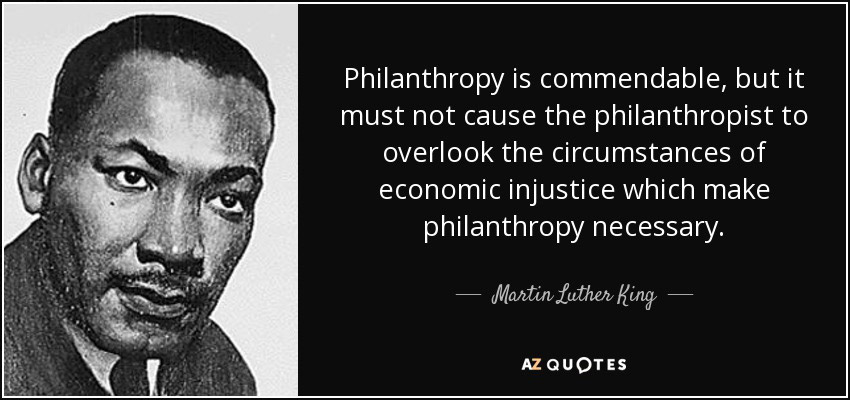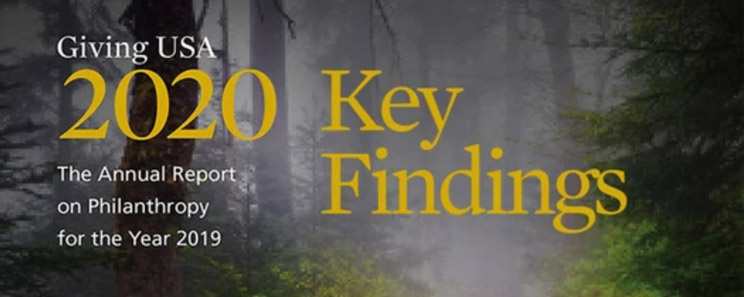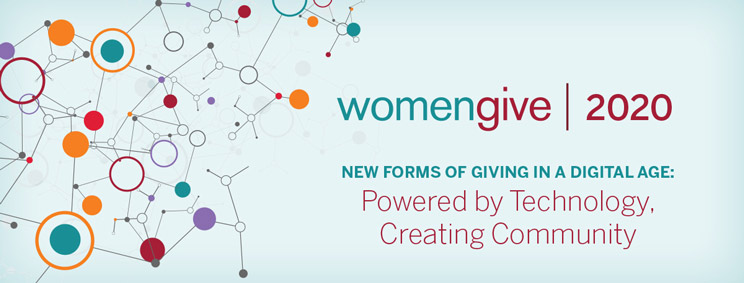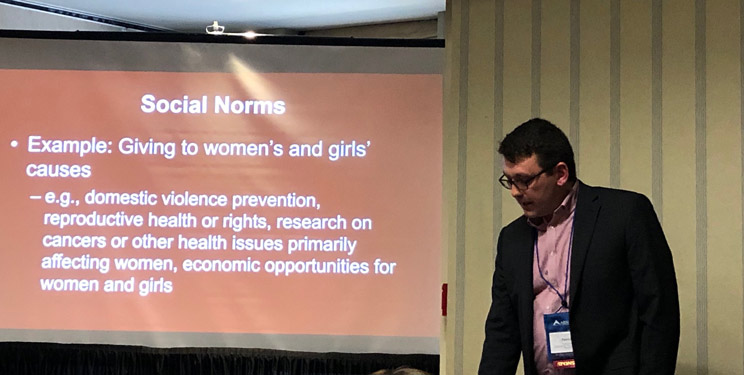Philanthropy is too small, too fragmented, too often subject to the capricious whims of unelected individuals. And, it is too problematic when it is used, as the Rev. Dr. Martin Luther King, Jr. cautioned us, “to overlook the circumstances of economic injustice which make philanthropy necessary.”
We had philanthropy among us since before we learned to till the land as a species, so clearly, generosity alone is not sufficient for the kind of social betterment we seek. Our recognition of the injustices that have been laid bare by the pandemic and the killing of George Floyd and other unarmed Black men on the streets of America demand more.
Moreover, in the context of today’s policy landscape, the giving of money represents about two percent of the U.S. GDP and less than that in other countries. Money from philanthropy trails fees for service and government support as a source of revenue for the U.S. nonprofit sector that we often closely identify with philanthropy, but which employs only about 10 percent of the U.S. workforce. (Of course, there are non-monetary manifestations of philanthropy ranging from volunteering to expressing one’s public beliefs, to being kind to strangers. Without these our civic space would be much diminished, not to mention our humanity.)
Yes, philanthropy may help develop new ideas for reform or even revolution, and support innovations that lead to policy improvements in specific areas, or fund local experiments that can be scaled by government or commerce.
Philanthropy did warn us and help prepare us for the pandemic, and it helped create the discipline of public health over a hundred years ago. It also supported the research and writing on race that is now topping our reading lists. It also played a role through funding and volunteerism in movements like Black Lives Matter that have agitated effectively to be heard. And, in all these instances, philanthropy played a supporting role, not the starring role.
So, it is understandable that when we hear calls for systemic change, to face the racism and structural inequality that betray America’s founding values, few expect philanthropy to lead the charge. These are big changes, the kind that take place in tandem with world wars, depressions, and wholesale social upheaval.
It is when governments, commercial giants, military leaders, and the propaganda might of our newest media technologies shift their orientation to work for the kind of significant change that gets at root causes.
I hope you heard David Rubenstein speak to his patriotic philanthropy in our Perspectives on Philanthropy series, explaining his request that Congress remove Robert E. Lee’s name from Arlington House on Arlington National Cemetery, which he helped refurbish. It is exhilarating to see the consensus about removing the vestiges of Confederate triumphalism from our public spaces and the breadth of agreement that they are indeed toxic to our civic lives.
We have less agreement on the calls for social justice by many of our youth. David Brooks and others have argued that this is not the time to obsess about the symbolism that he sees as the obsession of the social justice activists who walk our streets and campuses. He argues that the quasi-religious social justice movement claims that “viewpoints are not explorations of truth; they are weapons that dominant groups use to maintain their place in the power structure. Words can thus be a form of violence that has to be regulated.”
I do agree that cancel culture is problematic, and there are echoes of thought policing that we have seen in earlier revolutionary periods, about which the opinion pages of The Wall Street Journal remain energetically vigilant. However, this is also the point at which we should remember philanthropy being necessary for peaceful change. As we debate which measures will be sufficient to make this time different, to actually change policy, remember the necessity of philanthropy even though it will not be leading the charge.
How is philanthropy necessary? Without generous interpretation of each other’s arguments, without truly interested listening, we are just competing to seize the instruments of the state to coerce those who disagree with us. This method seems less effective and less sustainable than building the arguments, gathering the evidence and resisting creatively.
This, of course, was how the movement for racial justice prepared and was able to rise to the occasion when the pandemic revealed many truths about how risks and rewards are distributed in our society. On this theme, I will be conversing with our alumnus Derrick Feldman on his study of youth movements when he joins us later this month for Perspectives on Philanthropy.
A few days ago, I listened to Cornell West on The University of Edinburgh’s Living Gratefully podcast. He inspires us as he reminds us of the power of hope and love in sustaining the possibility of justice in Black communities. So, philanthropy will not bring you to justice, but you might get lost without it.
We saw a vivid depiction of the embrace of goodwill toward all, including one’s oppressors, who are not leading authentic or satisfying lives, in one of the early events we held with our Mays Family Institute on Diverse Philanthropy. It was Race Matters: Faith and Philanthropy in the African American Community.
The conversation illustrated how the American founding values were nurtured by those who were denied them, but who, in turn, did not seek to deny the full dignity they sought to others. It has become clear to me, with too much delay, that the American project in general and American philanthropy, in particular, cannot be understood without a grounding in race and the Black experience.
You may have grand plans that are sufficient for wholesale change that rearranges society to lift up the dispossessed, but how sustainable and attractive will they be without philanthropy by their side? We have had experiments that have fulfilled “dreams of systems so perfect that no one will need to be good.”
This is sadly what happened with the “socialist” revolutions of the 20th century; those leading the vanguard to erase the privileges of the bourgeoisie ended up arrogating to themselves (after purging their close allies and friends) brutal privileges that led to some of the darkest moments in recent human history. But as we engage the movement for change, we should not prejudge our moment as a simple echo of historical antecedents. We need to be generous listeners. After all, listening well is increasingly recognized as the hallmark of great leadership.
So when Darren Walker, president of the Ford Foundation, asks Are You Willing to Give Up Your Privilege? subtitling his trenchant piece “Philanthropy alone won’t save the American dream,” he argues that those with privilege today will need to give it up if we are to move toward justice. But I would also add that those with privilege today have a lot to gain.
Living in a world of more equity where one has less power to subjugate others might actually be a preferable way to be. As the Rev. Dr. King also said, “you may tower high in philanthropy, but it you have not love, your charity means nothing.”
Best regards,

Amir Pasic
Eugene R. Tempel Dean






